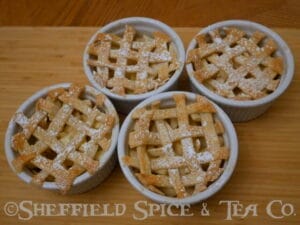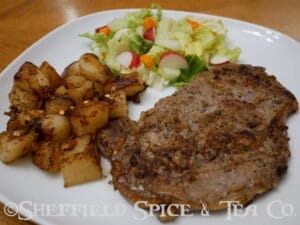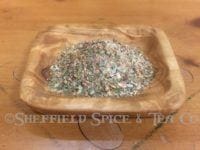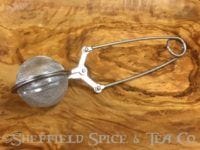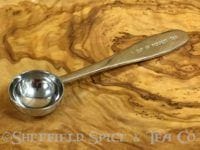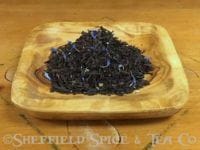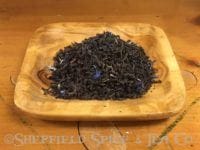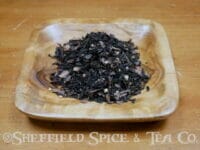Bancha
$3.25 – $26.00
Description
Bancha
Bancha (or Ban Cha) is a Japanese Tea, produced from the bottom part of tea leaves as well as from later-harvested tea. It brews a pale-yellow cup with a smooth yet robust flavor, without much of the bitterness or astringency of many other Japanese greens. It has a long and storied history. In Japan it is said that like the ancient culture of the Samurai and Geisha, the story of Bancha is intrinsically linked to the spirit of the country. That sounds like the makings of a pretty good reputation to us. Slightly unappetizing, but a good story.
“Twiggy”, ”heavy”, ”coarse” is how it is sometimes characterized. In some tea circles Bancha has a bad reputation. Well, we would like to take this opportunity to point out how undeserved this reputation is. There are a few ways to dispel any negatives surrounding this wonderful brew. Primary among these is Bancha’s long and storied history. In Japan it is said that like the ancient culture of the Samurai and Geisha, the story of Bancha is intrinsically linked to the spirit of the country. That sounds like the makings of a pretty good reputation to us.
The story of this tea begins many centuries ago in Shizuoka prefecture under the shadows of Mount Fuji. Legend has it that a Buddhist priest named Daruma, unable to stay awake during long prayer ceremonies, tore out his eyelids so that his eyes might never close. These he threw in the temple garden where they took root and produced a tea plant with eyebrow-shaped leaves. Soon afterward the priest and his fellow monks began plucking the leaves of the miraculous tea plant. Using a technique learned from their Buddhist brethren in China they began drying the leaves under the eaves of their temple. The tea became very popular with the monks and in time, with the pilgrims who came to hear their teachings. As part of their lesson in the way to Buddhist enlightenment, the monks taught the pilgrims how to produce and consume Bancha as a way to relax and understand the cycles of life. The pilgrims brought the techniques back with them to their villages and soon bundles of leaves could be found drying at family homes throughout the country. As decades passed, growing and producing Bancha became a common household chore with each family developing their own unique method of growing and crafting the tea. Drinking the flavorful brew allowed them a few moments of quiet reflection where they could contemplate the world and their place in it. Although in later years Sencha would overtake Bancha in popularity, for many centuries Bancha was the most commonly consumed beverage in Japan.
As for the quality of the tea, there is no denying that the grade of leaf used for making Bancha is technically less refined than that used for producing Sencha. Bancha is typically made using second flush leaf plucked during late summer and early autumn. This leaf is characterized by coarse, wide leaves, and produces a robust and full flavored cup. The tea is still grown in Shizuoka prefecture and is generally harvested by the tea plucking machines the Japanese industry is famous for. In Japan, production methods are exacted to a science. Nowhere is this truer than in the organic fields where this tea was grown where the absence of pesticide means that producers must put extra care and time into cultivating their plants. The result is that it is almost impossible to brew a bad cup of organic Japanese tea. But don’t just take our word for it – brew a pot today and steep yourself in the history of tea drinking in Japan.
We sell other Green Teas we import from the same family in Japan. So, if you enjoy Green Teas and would like to try our other Japanese teas, please try our Matcha Genmaicha, Fukamushi Sencha, Bancha, Houjicha, Kukicha and our Premium Ceremonial Matcha Tea. Their quality is unsurpassed for Japanese Teas.
Steeping Instructions
Hot tea brewing method: Put 1 slightly heaping tsp of loose tea for each 7-9oz of water in the teapot. Bring filtered or freshly drawn cold water to a rolling boil. Let cool a minute or 2 (to about 180ºF). Pour the water over tea. Steep 3 to 7 minutes. Milk & Sugar are not recommended.
Iced Tea: For a Liter or quart use 2 heaping Tbsp. of loose tea into teapot. Pour 1 1/4 cup boiling water on tea. Steep 5 minutes. Quarter fill serving pitcher straining tea. Add Ice. Top up with cold water, garnish & sweeten to taste.
Contains: Green Tea
Additional information
| Weight | N/A |
|---|---|
| Tea Sizes | 2 oz, 4 oz, 8 oz, 16 oz |



